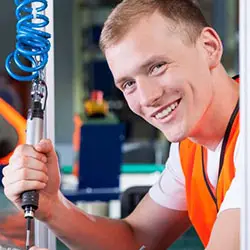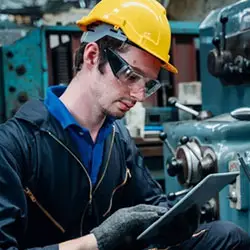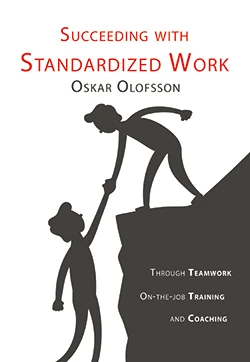
In the process industry, the Lean way of thinking hasn’t yet become as popular as in assembly operations. Many people say that Lean isn’t suitable for them. Talking about "creating flow" and "reduce batch sizes" may not sound relevant.
If we can use Lean in such a variety of operations as car production, nursing and administrative processes – then why wouldn’t it work in pulp mills, chemical processing industry or a mine?
The answer is that some parts of Lean works in the same way for everyone such as building a learning organization and having a scientific method for improvement. There are however some basic differences between different operations that we need to take into account.
One of these differences is the question of who is producing?
Manual production – People are producing! Does the work stop if you take a break? Then you are part of a manual process. The usual example is variations of manual assembling, but a lot of administrative jobs are considered manual production as well. With manual production, the “classical” Lean-methods can be used perfectly, and it comes with a lot of benefits. Creating clear flows, balancing the workload and pull systems are some things that come easier thanks to Lean.
Automated production – Machines and humans are working together! This type of production is in the middle of manual production and the process industry. The usual scene includes a machine doing the producing, and a human operator nearby who is handling the material, fixing small problems when they arise, controlling the production and preparing the next round. Except for the same Lean-tools as with the manual production, the biggest potential lies in improvements such as:
Processes industry – Machines are producing! In the processing industry, the operators are running the process from centralized control rooms through advanced computerized systems. It is not reasonable to strive for a 100% value adding work as you do in traditional Lean-work. When the production is going well, the staff does not have to worry.
Instead, the goals within the process industry are a high level of usage, effective maintenance, and stable production processes.
The introduction of Lean to the process industry
Lean in the process industry is 1. about finding the best way of operation and ensure that we will follow them all the time. 2. it is about high safety level and 3. a good understanding of our processes so that we can improve them. The tools we use are:
Standardized work: An important cause of process variation is differences in the way that different individuals or teams are working. In the process industry, there will never get a fully standardized way of working since we cannot predict every possible problem or situation. However, we should standardize all of the most critical parts of the process that will directly affect quality, reliability or safety. Operators training each other is not good enough, we have to define the best-known way of working, train everyone similarly and set up a process to help improve the way of working in every possible manner.
Production control centers: To be able to control the whole plant from one single place is necessary when you want to make decisions based on an overall view of the process. It is good to replace many outspread control rooms with one common There, the operators will work together after an overall view of the process and that will allow them to in a natural manner cooperate when it comes to maintenance and support.
Increased reliability: Every unplanned break means a sway to the process that can take hours to repair. Within the process industry, it is therefore not enough to just optimize the critical equipment. We need to have zero tolerance for all errors, where nothing is too small to take action. The tools for this are:
5S to ensure that the equipment is kept clean and to lessen the risk of management errors
Operator maintenace checks and prevention for early discovery of possible errors
Effective maintenance procedures with well prepared, prioritized and scheduled jobs
Systematical improvement according to scientific methods for removing the cause of problems
Understanding of process and optimization: When we have achieved an acceptable stability to the processing the next step is to adjust the processes on a deeper level. The goal is to optimize the process to lower the risk of an error in quality and minimize resource usage in the form of basic commodities, energy or environmental impact. Since the production processes are very complex with a lot of factors that are hard to take into consideration at the same time, our gut feelings will not be enough in most cases. Instead, we have to design trials and use statistical methods of evaluation.
By Oskar Olofsson

Making lean work for you

World-Class / Lean Manufacturing

5S Implementation

SMED Quick Change-over

TPM and Plant Maintenance

Succeeding With Standardized Work

Succeeding With 5S